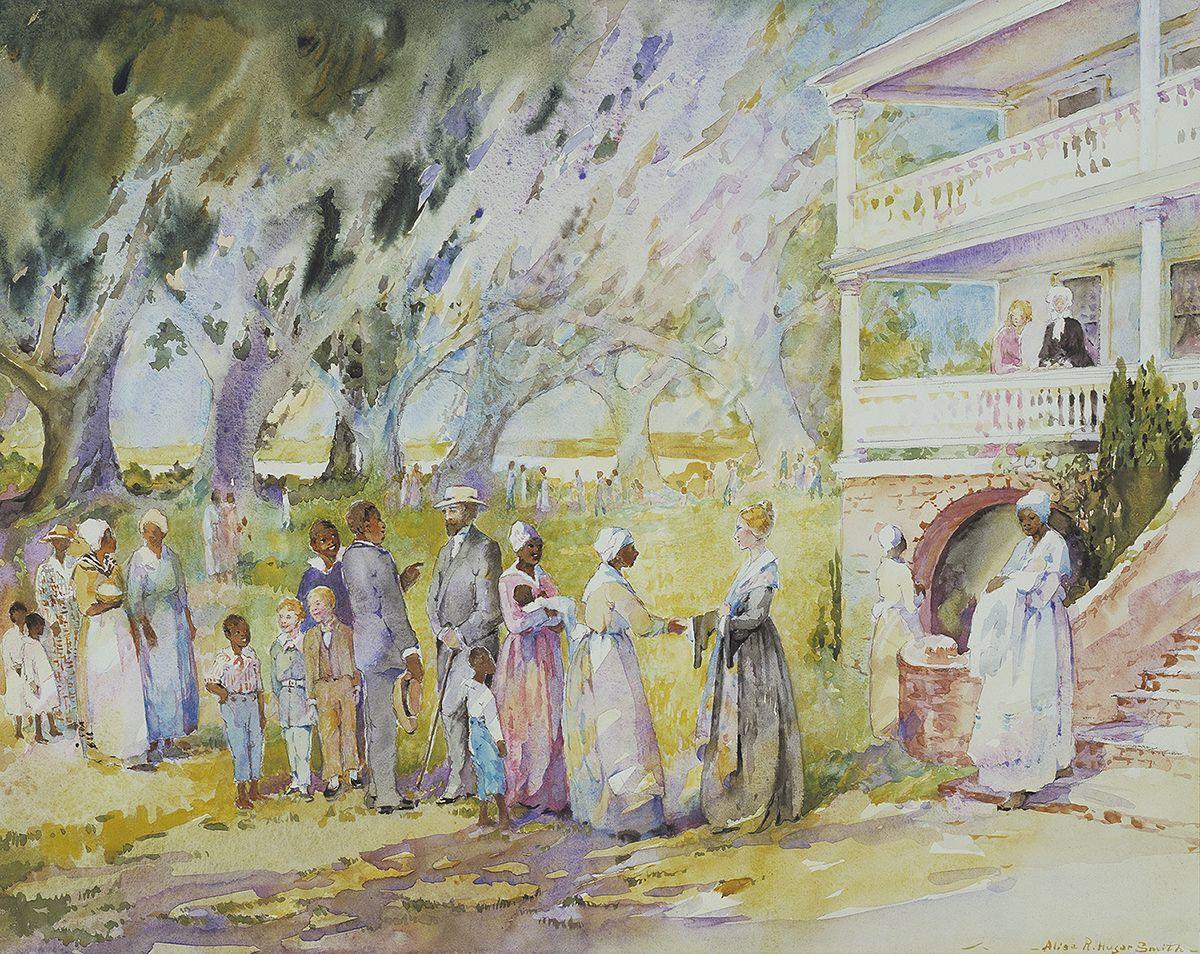The second chapter in Stephanie E. Yuhl’s 2005 publication A Golden Haze of Memory: The Making of Historic Charleston, entitled “The Legend is Truer than the Fact: Artistic Representation of Race, Time, and Place,” details Charleston’s legacy in the elegant paintings of Charleston Renaissance artists like Alice Ravenel Huger Smith and Elizabeth O’Neill Verner, and details where it separates from the reality of Charleston life and society. The Charleston Renaissance occurred in the 1920s and 30s, and the artworks covered in this chapter span the era of Renaissance artists. These Renaissance artists consist of both white and black names, separated into sections of the chapter, though there is considerable space given to specific white artists more so than their African-American counterparts. Smith’s perspective is explored extensively, largely representing the dominant beliefs of aristocratic Southern whites, those that absorbed the values and beliefs of a generation raised before the onset of the Civil War and loyal to its own selective memory of antebellum culture” (Yuhl 60).
Yuhl also briefly uses Verner’s life to represent the rising, “new money” class of Charleston that contributed to the Renaissance, as well as interesting, but not extensive, discussion of African-American accomplishments, to illustrate her argument that Renaissance artistic representations of Charleston relied heavily on “the old Southern dichotomy of fantasy and fact” (54). Artists in the “Alternative America” (Yuhl 67) of the elite South painted what were considered “authentic” representations, even though they had no corresponding reality. Artists were effectively “propagandists,” selling the luxury of a South that doesn’t exist but that they, being the highest social class, wanted desperately to somehow preserve (Yuhl 54).
Despite bearing an important distinction in the title, the sections of the chapter discussing African American contribution to artistic Charleston culture were relatively small and sparse. Likely due to the fact that the chapter is looking at popular conception of Charleston through art mainly propagated by white elites, the black community seemingly only appeared as primitive shapes or “amusingly individual” in these paintings. Yuhl makes sure to emphasize that white artists were aware this wasn’t the case, but this wasn’t conveyed through the work of painters like Smith and Verner. The black artists she discusses, like Elise Harleston, presented a more cohesive picture of the different social structures and people, often living the “middle-class American life” (Yuhl 58). Though white elites were the focus and African Americans functioned as “props” in many Southerner’s paintings, there were other social classes and people who weren’t confined to such neat definitions. While the author makes this idea clear, I would have appreciated more information on the effects of certain social categories, like gender, in the artistic community of the time. Most of the artists discussed are women, and it’s stated multiple times that an artist is a common job description for young ladies, yet I would have appreciated more detail on why this was so and how these business practices functioned.
“The Legend is Truer Than Fact” is a chapter that largely confirms the previous notions about Charleston, and in particular the Charleston Renaissance, that we’ve encountered so far. Charleston insiders, like the writers Herbert Ravenel Sass and Dubose Heyward, and artists like Smith and Verner, created an idyllic south that largely ignores the horrendous inequality and prejudice inherent in their contemporary culture and instead focuses on aesthetic beauty. There is a prevailing, fatalist sense among these artists and their art that the south is “endangered” and that their “perfect” way of life is disappearing, or has already disappeared, right before their eyes.
Yuhl, Stephanie E. A Golden Haze of Memory : the Making of Historic Charleston. University of North Carolina Press, 2005. pp. 53-87.



Central to Their Lives, a collection of reproductions from a collection of women artists’ work, plus some very good essays about the artists.
https://pascal-cofc.library.cofc.edu/permalink/01PASCAL_COFC/m1tic9/alma991007255199705613
Gibbes Museum map that presents both White and Black artists and their locations
https://www.gibbesmuseum.org/news/digitally-mapping-the-charleston-renaissance/